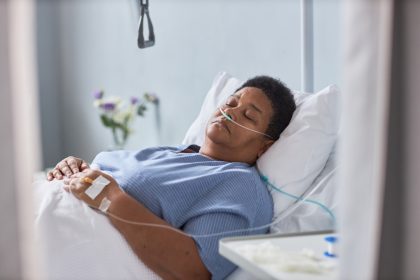Strokes, a leading cause of severe disability and death worldwide, can strike at any age, often without warning. Recognizing the early signs of this potentially life-altering event is crucial for prompt treatment and improved outcomes. Here are five critical stroke symptoms that require immediate medical attention, along with insights into why rapid response is vital.
Sudden numbness or weakness
One of the most recognizable stroke signs is an abrupt onset of numbness or weakness, particularly when it affects one side of the body. This symptom often manifests in the face, arm, or leg.
Why it matters
This sudden loss of function occurs due to damage in the opposite hemisphere of the brain. Prompt treatment can potentially reverse these effects, while delay may lead to permanent impairment.
Confusion or difficulty speaking
Strokes can profoundly impact cognitive function, leading to sudden confusion, trouble speaking, or difficulty understanding others. These symptoms indicate that the brain’s language and comprehension centers may be affected.
The importance of clear communication
Even mild speech problems or moments of confusion should not be dismissed. These symptoms could signal a developing stroke, and immediate medical evaluation is crucial to prevent further damage.
Sudden vision problems
Vision changes, including blurred or double vision, or even temporary loss of sight in one or both eyes, can indicate a stroke. These symptoms occur when the brain’s ability to process visual information is impaired.
Beyond eye health
While it’s tempting to attribute sudden vision changes to fatigue or the need for new glasses, these symptoms could point to a more serious underlying condition. Ignoring them could lead to permanent vision loss if critical visual processing areas are affected.
Trouble walking or loss of balance
Sudden difficulty with coordination, including trouble walking, dizziness, or loss of balance, can be a sign of stroke. These symptoms arise when the brain’s control over motor functions is interrupted.
Mobility at stake
What might seem like a momentary loss of coordination could signal a larger health crisis. Quick action in response to these symptoms could preserve mobility and independence.
Severe, sudden headache
A stroke-induced headache is often described as the worst headache one has ever experienced. This type of severe, sudden pain could indicate a hemorrhagic stroke, where a blood vessel bursts in the brain.
A critical distinction
Unlike common headaches, a stroke-related headache demands immediate medical attention. Delaying treatment for this type of stroke can lead to severe complications or death.
The crucial factor: Time
The common thread in addressing these five signs is the critical importance of swift action. The medical community emphasizes that “time is brain” when it comes to stroke treatment. Every moment of delay can result in the death of brain cells, reducing the chances of full recovery.
Calling emergency services at the first sign of these symptoms is crucial. Some stroke treatments, such as clot-busting medications, are most effective when administered within a few hours of symptom onset. Even a brief delay in seeking treatment can result in irreversible damage.
Reducing stroke risk
While recognizing stroke signs is vital, prevention remains the best strategy. Maintaining a healthy lifestyle can significantly lower stroke risk. Key preventive measures include:
- Managing blood pressure
- Eating a balanced diet
- Exercising regularly
- Avoiding smoking
- Scheduling regular health check-ups
Understanding the connection between overall health and stroke risk can motivate positive lifestyle changes, potentially averting this life-threatening condition.
A call to awareness and action
Strokes can have devastating consequences, potentially robbing individuals of their independence, mobility, or even their lives. The five signs discussed sudden numbness, confusion, vision problems, balance issues, and severe headaches are critical warnings that demand immediate attention.
By staying informed about these symptoms and acting quickly when they appear, individuals can take proactive steps to protect their health and that of their loved ones. In the realm of stroke care, every second counts. Time lost truly is brain lost, underscoring the importance of swift action in the face of these warning signs.
Ultimately, the power to potentially save a life or prevent long-term disability lies in recognizing these symptoms and responding without hesitation. Stay informed, stay vigilant, and don’t hesitate to seek emergency care when these warning signs appear.
This story was created using AI technology.

















